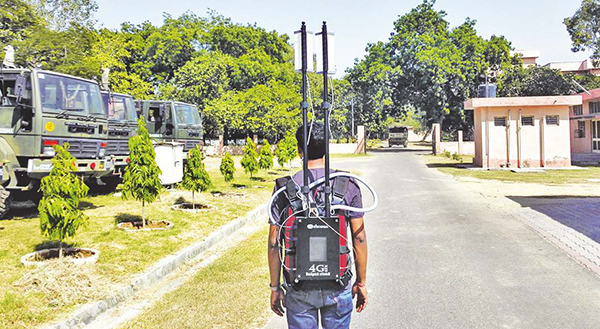Engineering and construction giant Larsen & Toubro said, on 7 April, that Smart World and Communication Business of L&T Construction had won a ‘large’ contract from the Indian Army for setting up an advanced IT-enabled system to operate the Armed Forces network under the Network of Spectrum (NFS). The project involves the creation of a resilient Cloud-based IT infrastructure on Infrastructure as a service (IAAS) model.
Though the company did not mention the exact value of the contract to establish an unified network management system to manage, support and operate the countrywide network under the NFS, as per its project classification, ranges between Rs 2,500 crore and Rs 5,000 crore.
It involves creating a centralised network monitoring, management and control system for all the seven layers under NFS which interconnects 414 defence stations.
The scope also includes Next Generation Operations System and Software based Unified Network Management System, Eight Network Operations Centers (NOCs) consisting of National NOCs, Disaster Recovery NOCs, Regional NOCs, Security Operation Centers, Tier III Data Centres and Training Infrastructure, the company said.
This is a significant departure from past practice, when Bharat Electronics (BEL) would have been “nominated” to discharge a contract with such crucial electronic security elements.
Under the “Network for Spectrum” (NFS) arrangement, in which the military has surrendered 40 megahertz (MHz) of spectrum to the Department of Telecommunications (DoT) – 25MHz in the 3G band and 20MHz in the 2G band. In return, BSNL was charged with establishing a pan-India OFC network for the military’s exclusive use. In May 2018, the Union cabinet approved the expenditure of Rs 24,664 crore for the OFC network.
The facilities under this project will allow real-time monitoring of the complete IT network backbone of the Indian army and provide complete visibility of deployed Network assets, leading to optimal utilization of resources, it added.
At the heart of L&T’s UNMS software system is the so-called Next Generation Operation Support System (NGOSS), a key module that has the job of ensuring the entire network is up and running optimally. This will involve complete visibility and real-time monitoring of the diverse network assets on a common management platform.
The NGOSS functions like the backend software that conventional wireless network service providers -such as Airtel, BSNL, Jio and Vodafone – use to route and connect calls from subscribers’ mobile phones, find an alternate routing if a transmission tower is down, and quickly repair malfunctioning systems.
Similarly the NGOSS will ensure the proper functioning of all AFN services such as voice and video calls, data transmission, etc. It will also manage the adding and deleting of subscribers and value added services.
This will be done through a “Data Centre Infrastructure” that will be responsible for networking, routing and switching, provision of servers and storages, and the security firewalling appropriate to a military network.
The project is to be implemented in 18 months followed by three years of warranty and seven years of Annual Maintenance Contract (AMC) during which L&T will provide managed maintenance services.
Since Independence, all communications between the service headquarters in New Delhi, theatre command headquarters in locations like Udhampur, Shillong and Kochi and further to corps, divisions, brigades and air and naval bases and logistical units were carried out via decades-old landlines, radio relay, radio and troposcatter links.
Now, a 60,000-kilometre long, pan-Indian, optic fibre cable (OFC) network will soon connect all these locations. Bharat Sanchar Nigam (BSNL) has already completed 57,000 km of the AFN. This includes optical cabling, the transmission and routing backbone and, crucially, the last-mile connectivity with forward bases. Since many of them are in remote locations without road links, they are connected to the AFN with microwave radio or satellite links.


















